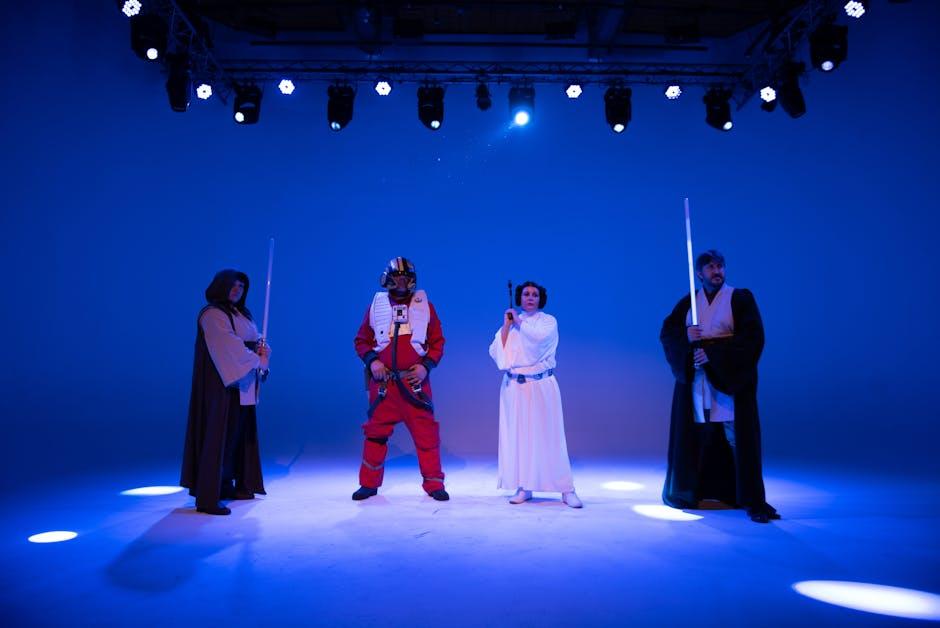In the realm of science fiction cinema, where imagination knows no bounds, the construction of entire worlds is both an art and a science. Production teams are tasked with transforming visionary concepts into tangible realities, crafting environments that captivate audiences and immerse them in the narrative. This intricate process involves a symbiotic blend of creativity, technology, and meticulous planning. From conceptual design and set construction to digital effects and soundscapes, each element plays a crucial role in bringing these fantastical universes to life. This article delves into the methodologies and innovations that empower production teams to build the extraordinary worlds that define the sci-fi genre, offering an analytical exploration of the craftsmanship behind the spectacle.
Understanding the Foundations of Sci-Fi Worldbuilding
In the realm of science fiction, worldbuilding is a meticulous craft that melds creativity with practicality, shaping universes that are both fantastical and believable. Production teams embark on this journey by laying down a set of foundational elements that anchor the narrative. Setting and Geography are crucial, defining the physical landscapes and atmospheric conditions that characters inhabit. From alien terrains to futuristic cityscapes, these environments must align with the story’s themes and technological assumptions.
Another cornerstone is the creation of Cultural and Social Structures. This involves crafting languages, customs, and societal norms that reflect the imagined world’s history and values. Teams often develop detailed backstories for civilizations, influencing everything from fashion to political systems. Additionally, Technological and Scientific Frameworks are essential, ensuring that the science underpinning the fiction is coherent and plausible. This involves consulting experts to create technologies that feel authentic, while still leaving room for imagination. By weaving these elements together, production teams create immersive worlds that captivate audiences and sustain the suspension of disbelief.

Harnessing Technology and Innovation for Immersive Environments
In the realm of sci-fi filmmaking, the ability to transport audiences to otherworldly landscapes hinges on the seamless integration of cutting-edge technology and innovative techniques. Visual effects (VFX) and computer-generated imagery (CGI) are pivotal, enabling the creation of expansive universes and intricate details that defy the constraints of reality. Teams employ powerful software tools like Blender, Maya, and Houdini to craft lifelike textures and complex simulations. These tools allow artists to manipulate light, shadow, and motion, creating environments that feel both tangible and extraordinary.
Beyond digital artistry, production teams utilize augmented reality (AR) and virtual reality (VR) to refine their creative visions. By leveraging these technologies, directors and designers can explore virtual sets in real-time, ensuring every detail aligns with the narrative’s demands. Key components in this process include:
- Pre-visualization: Developing detailed storyboards and animatics to map out scenes before shooting begins.
- 3D Scanning: Capturing real-world objects and locations to enhance digital environments with authentic textures.
- Motion Capture: Recording actors’ movements to bring digital characters to life with unprecedented realism.
By embracing these technological advancements, production teams craft immersive worlds that captivate and inspire, pushing the boundaries of cinematic storytelling.

Collaborative Dynamics: The Role of Cross-Disciplinary Teams
In the realm of sci-fi filmmaking, the seamless integration of diverse expertise is crucial to crafting believable and immersive universes. Cross-disciplinary teams play an essential role in this process, blending the skills of artists, engineers, writers, and technologists to build worlds that captivate audiences. Collaboration between these specialists fosters innovation, allowing for the creation of unique landscapes, futuristic technology, and intricate storylines. The synergy among team members ensures that each element—from set design to visual effects—aligns with the film’s narrative vision, producing a cohesive and engaging experience.
Consider the following dynamics that fuel these collaborative efforts:
- Artistry and Engineering: Designers and engineers work together to transform conceptual art into tangible sets and props, ensuring aesthetic appeal and functionality.
- Storytelling and Technology: Writers collaborate with VFX artists to integrate cutting-edge technology into the storyline, enhancing the plot with visually stunning effects.
- Innovation through Diversity: Diverse perspectives encourage creative solutions, driving the development of original concepts and groundbreaking techniques.
This intricate dance of disciplines not only brings sci-fi worlds to life but also pushes the boundaries of what is possible in filmmaking.

Practical Tips for Effective Budget Management in Sci-Fi Productions
Managing a budget effectively in sci-fi productions requires strategic planning and innovative thinking. Pre-visualization tools are invaluable, allowing teams to visualize complex scenes digitally before committing to costly sets or effects. This not only helps in refining the creative vision but also in identifying potential financial pitfalls early on. Collaboration with experienced VFX teams can also lead to significant savings, as they often have insights into cost-effective techniques and emerging technologies that can deliver high-quality results without breaking the bank.
- Leverage existing resources: Utilize locations and props that can be adapted or repurposed to fit the sci-fi theme.
- Negotiate bulk deals: Work with vendors to secure discounts on materials by purchasing in bulk.
- Implement agile workflows: Foster an environment where the team can quickly adapt to changes, minimizing wasted time and resources.
- Invest in modular set designs: Create sets that can be easily reconfigured for multiple scenes or projects.
By employing these strategies, production teams can stretch their budgets while still delivering the visually stunning worlds that define the sci-fi genre.

